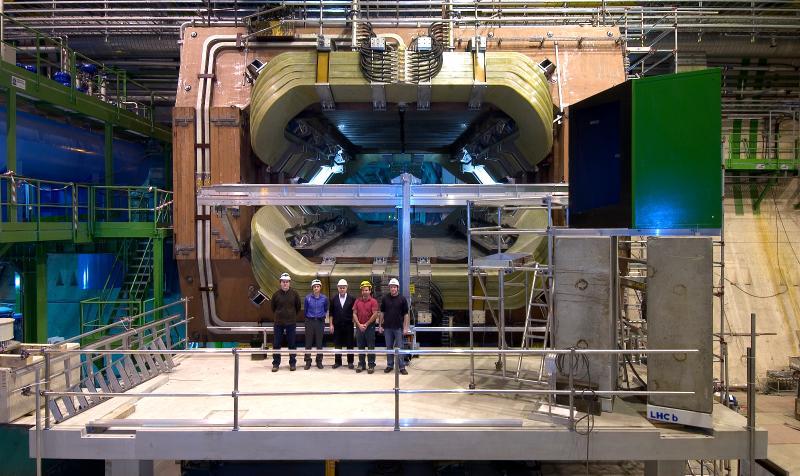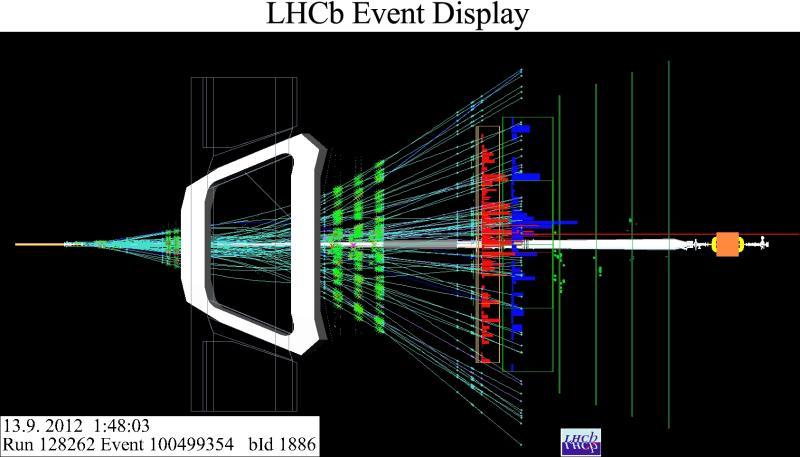In the first decade of the new millennium, the large hadron collider took European innovation into a new dimension
Amid the splendour of Michelangelo’s architectural innovations at the Palazzo dei Conservatori on the Capitoline Hill, delegates from six European countries signed the Treaty of Rome on 25 March 1957. The treaty, which included the articles that founded the European Investment Bank, was “a declaration of future good intentions,” according to one historian. For two weeks, we are publishing a series of stories to mark the sixtieth anniversary of the treaty—one for each decade of the EIB story. These are stories of how the EIB helped turn good intentions into reality.
Donwload the book, available in PDF and epub format.
It was finally happening. In a 27-kilometre tunnel, mighty magnets kept a stream of particles in orbit, while high-powered lenses focused them. Dr Frédérick Bordry came excitedly to his feet in the control room of the large hadron collider at the European Organisation for Nuclear Research. A quarter century after the start of operations, they had remade the conditions that existed at the beginning of the Big Bang. Bordry and his fellow scientists were able to observe the collision as two proton beams smashed into each other at the speed of light. The head of the technology department at the international facility near the Swiss-French border, he raised a glass of champagne to celebrate. “Wow, that’s really something,” thought Bordry, who’s now director of accelerators. “This is an amazing leap toward a deeper understanding of the conditions of matter.”
That was in March 2010. But the origin of the universe and the conditions of matter are puzzles not to be solved in one great blast. It took decades to reach that moment. Like the other scientists working at CERN (the French-language acronym of the organisation’s original name) Bordry knows there is endless study ahead of him and the other scientists, whose project is slated to run at least until the end of the 2030s. “We are able to explain now about four percent of the mass of the universe,” he says. “That’s a great achievement, but it’s still just a small proportion of everything that there is for us to know. Now we want to discover things like dark matter.” Even so, the data and techniques pioneered by the development of fundamental research at this large facility are already spun off into a number of start-up companies, some of the research material is available to private companies under licence, and CERN is planning to expand its incubator programme in collaboration with other research institutes and universities.

Unique for the Bank
It is exactly what the EIB envisaged when it signed a EUR 300 million credit facility for CERN in 2002 that was used to finance part of the construction of the large hadron collider. It was a decade that saw a major shift of emphasis toward innovation at the Bank. At first that was in support of a European Council decision in 2000 to create a great knowledge economy across Europe. The Council’s plan was ultimately diverted by the 2008 financial crisis, but by then the EIB had already more than met its target for innovation investment for the entire decade. CERN was undoubtedly conducting the most complex scientific research of any project funded by the EIB during that decade, but many others benefitted from the Bank’s emphasis on this sector. “It was really unique, compared to anything that the Bank had done up until then,” says Aristomenis Pofantis, deputy technical advisor in the Bank’s innovative industries division. “It was completely new to the Bank.”
The research produced by CERN during that decade of great innovation, however, was strong enough to make it easy for the EIB to provide a further credit of up to CHF 250 million in 2016. “This loan is to finance the upgrade of the existing large hadron collider by increasing its capacity in a project called HL-LHC, for high luminosity large hadron collider,” says Juan de Pierpont, the senior loan officer who worked on the second deal. “With our financing we accelerate their capacity to invest.”
Here is how that works: CERN’s 22 member states send it an annual budget of CHF 1.2 billion. The budget is constant and doesn’t allow for increased budgetary needs connected to a big, new technological operation. To cover the exceptional expenses linked to this major upgrade, CERN draws on the EIB’s credit facility and, later, pays the funds back out of its regular budget. “Without the EIB we would have to go to commercial banks,” says Catherine Spencer, CERN’s head of treasury. “The EIB’s terms and conditions are much more attractive to us and better match our needs.”

Knowledge transfer
On a high theoretical level, CERN’s research made headlines with its discovery of a particle linked to the mechanism that gives mass to elementary particles, famously known as the Higgs boson. Its Knowledge Transfer Group, however, has worked on spinning out its research into 16 new companies so far, as well as sharing the research broadly. On the roof of Geneva Airport, for example, the ultra-high vacuum panels that supply the heating and air-conditioning are based on the vacuum inside the large hadron collider. Proton therapies for cancers are being developed in Italy and Austria, while in France CERN’s high-field magnets have been adapted for use by neurologists.
It is not the first time CERN’s research has made a real world impact. After all, it was a British scientist working at CERN who invented the worldwide web in 1989. Next, according to chief of industry relations Thierry Lagrange, CERN aims to set up an initiative called ATTRACT along with other research institutes, universities and corporations. The aim is to draw private sector finance to ideas born of scientific work.
The EIB may become involved in financing the ATTRACT programme. Already the Bank has expanded beyond its initial (and initially unique) CERN deal into other super-complex scientific work that includes:
- 2009: Sincrotrone Trieste Extension. A EUR 20 million loan to extend the research capacities of the Free Electron Laser at the large electron-accelerating synchrotron facility at Trieste, Italy. The laser produces ultrashort pulses of ultraviolet and X-ray light with gigawatt peak power levels, leading to extremely bright radiation sources. This opens the way to stroboscopic characterisation of dynamic phenomena in materials at the molecular level. In 2004 the Bank had already financed the upgrade of the existing synchrotron at the site with a EUR 60 million loan.
- 2015: European Synchrotron Radiation Facility. A EUR 65 million loan to upgrade the facilities in Grenoble, France, to optimise and increase the coherence and brilliance of the X-ray beams produced, to be used in photon science in a large spectrum of micro-analytical techniques.
- 2016: European Spallation Source. EUR 100 million for international scientific research infrastructure to be built in Lund, Sweden, and in Copenhagen. With neutron beams one hundred times brighter than current facilities, this project uses neutron-scattering techniques that offer the possibility of monitoring material structures and motion at a molecular level. It opens up new opportunities for researchers in multiple disciplines such as life sciences, environment, energy, transport and engineering, as well as physics, chemistry and even archaeology.
